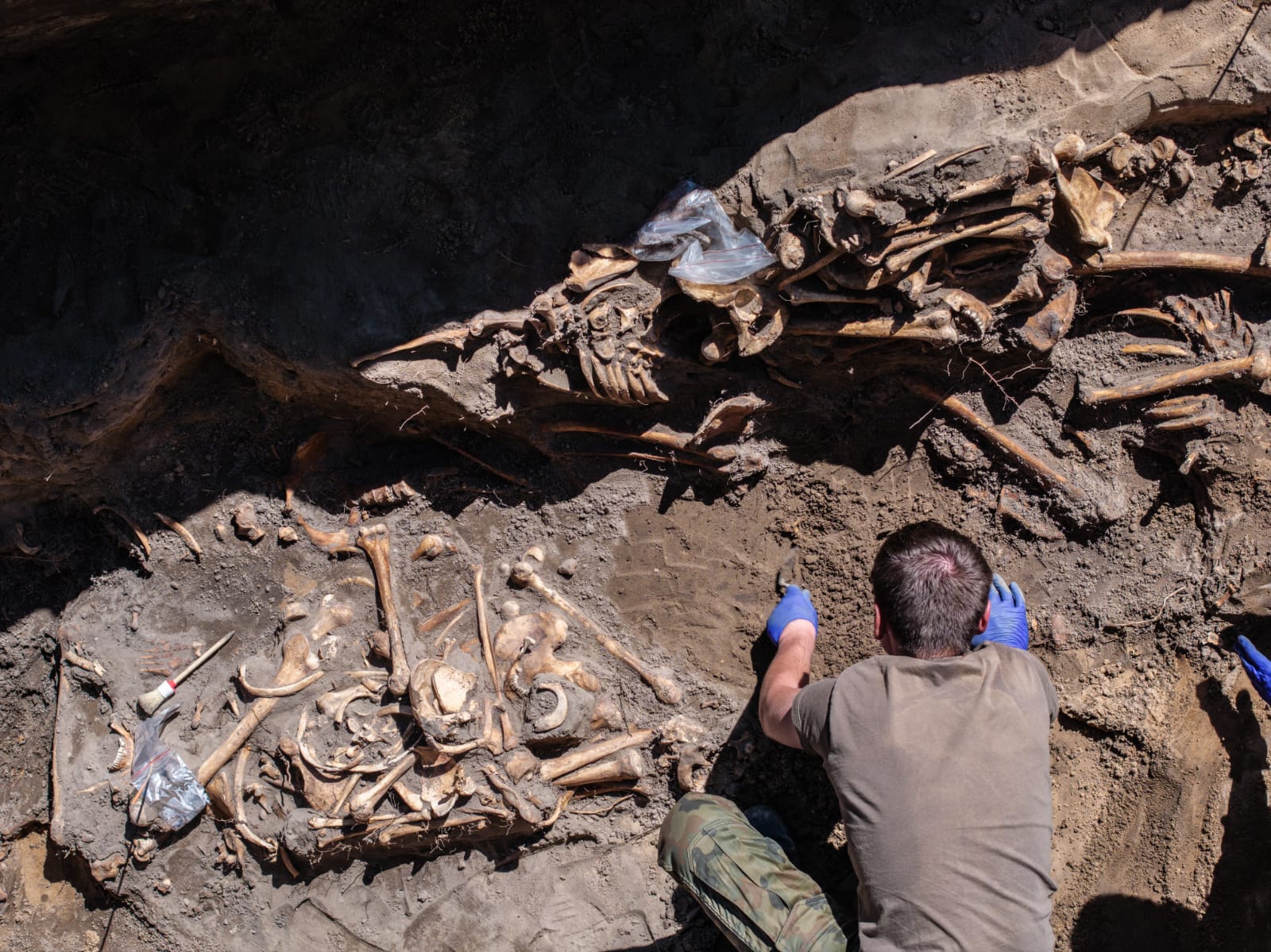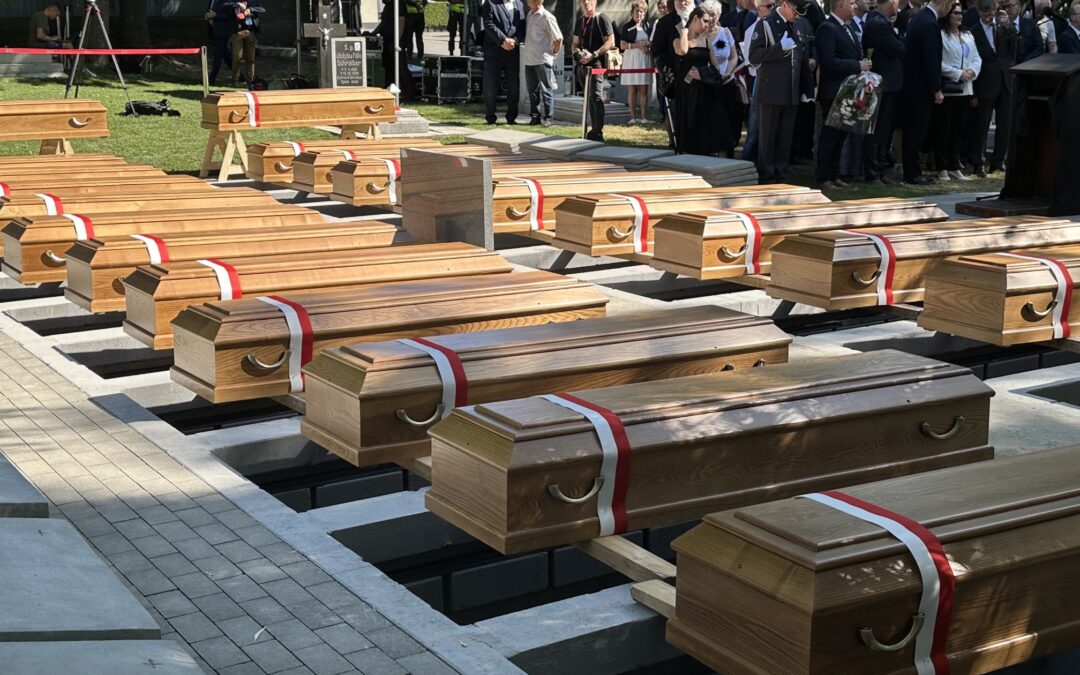Poland has conducted a state funeral for over 700 mostly unidentified victims of mass executions carried out by the German occupiers during World War Two in an area that became known as the “Valley of Death”.
Between 2021 and 2024, researchers from the state Institute of National Remembrance (IPN) found over a tonne of human bones buried there, on the outskirts of the town of Chojnice in northern Poland.
They have now been buried in 188 coffins at a state funeral in Chojnice attended by local and national officials, including a representative of President Andrzej Duda.
188 trumien ze szczątkami 700 polskich ofiar niemieckiego mordu na Pomorzu – ofiar Zbrodni Pomorskiej – było dziś krzykiem prawdy o II wojnie światowej 🇵🇱 @ipngovpl, Chojnice. pic.twitter.com/hWi26Kh7Yo
— Karol Nawrocki (@NawrockiKn) September 2, 2024
“On behalf of the president, I convey my respect to the IPN and all people of goodwill involved in the effort to discover the truth and [ensure] a dignified burial,” said Dariusz Waldemar Dudek, quoted by broadcaster TVN. “Let us be sure that as long as we live, the victims’ memory will not perish.”
In a letter from defence minister Władysław Kosiniak-Kamysz, read by Maciej Samsonowicz, the minister described Chojnice as “one of the symbols of the unimaginable tragedy and brutality that our homeland experienced at that time”.
“We must remember such places, especially in the face of Russia’s aggression against Ukraine. Because if we do not draw conclusions from history, this evil may repeat itself again,” he added.
Kosiniak-Kamysz also announced plans to build a monument dedicated to those who were killed in the “Valley of Death”. It is believed that up to 2,000 people may have been executed there, including during the “Intelligenzaktion Pommern”, a German operation to eradicate the Polish intelligentsia in the area.
Sorry to interrupt your reading. The article continues below.

Notes from Poland is run by a small editorial team and published by an independent, non-profit foundation that is funded through donations from our readers. We cannot do what we do without your support.
“These death pits were also supposed to be pits of amnesia,” said Karol Nawrocki, the IPN’s president, who thanked prosecutors from his organisation for continuing their pursuit of justice for such victims. “They died of hatred – of German hatred of Polishness cultivated for two centuries.”
In 2020, the IPN identified the location of the mass executions, after which the remains were found during archaeological work undertaken between 2021 and 2024. Shell casings and bullets used by German military and police units were also unearthed.
Many of the victims were killed in the autumn of 1939, shortly after Germany’s invasion of Poland, when the occupiers sought to eradicate highly educated members of society. Others were executed in 1945, during the final stages of the war. Some victims were also mentally ill people.
Sunday’s funeral took place on the 85th anniversary of the German invasion that started World War Two. Around 6 million Polish citizens, 17% of the prewar population, were killed in the war, a higher proportion than in any other country.

Excavations in the “Valley of Death” (photo: IPN/Daniel Frymark)
The IPN has so far managed to identify 120 of the victims. One of them was Irena Szydłowska, a member of the Home Army, Poland’s main underground resistance force. She was identified in 2021 thanks to a wedding ring found alongside her remains.
“For us it was a shock, disbelief that after 76 years we find out something about our grandmother,” her granddaughter, Mariola Nawrocka, told radio station Weekend FM ahead of the funeral.
For decades, the family had been trying to determine what happened to Szydłowska after she was arrested by the Gestapo in January 1945. Her son, Nawrocka’s father, was just four years old at the time.
Los babci poznała dzięki obrączce odnalezionej w chojnickiej Dolinie Śmierci. "Będziemy ją przekazywać z pokolenia na pokolenie". Wnuczka Ireny Szydłowskiej, łączniczki AK, Mariola Nawrocka z Grudziądza opowiada Weekend FM historię swojej babcihttps://t.co/tHHZ2xgjl9
— Weekend FM (@weekendfmpl) September 3, 2024
Main image credit: Rafał Leśkiewicz/X

Daniel Tilles is editor-in-chief of Notes from Poland. He has written on Polish affairs for a wide range of publications, including Foreign Policy, POLITICO Europe, EUobserver and Dziennik Gazeta Prawna.



















